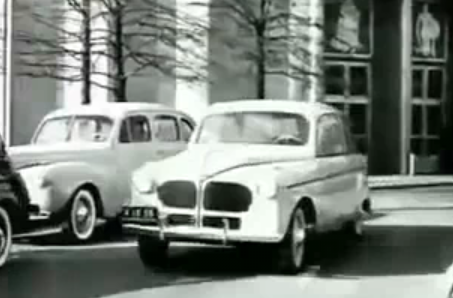Introduced To The Public On August 13, 1941

Amongst the thousands of products made from hemp, one of the most extraordinary is Henry Ford’s Plastic Hemp Car. Built in 1941, the Soybean Car contained cellulose fibers derived from hemp, sisal, and wheat straw.
A video from 1941 about the car in the opening credits as being the hemp car, and at the end it shows images of Henry Ford striking a hammer or axe onto a trunk lid. It is actually Ford’s personal car with a plastic panel of the same material on the trunk. This isn’t the hemp car itself.
Jack Thompson, narrator of the 1941 video, stated in the intro that this was the Soybean Car; he did not make it clear that the trunk Henry Ford was hitting was actually Ford’s personal car (made of the same material). The demonstration was dramatic, since the tool rebounded with much force and a picture of this was shown worldwide.
The hemp plastic was lighter than steel, yet could withstand ten times the impact without denting.
Hemp plastic is now primarily produced in China.
Could Henry Ford have ever dreamed that the overall cost to design and build a car would catch up with society? Well, this wonderful article clearly shows that Henry just might have been a century ahead of his time. It’s quite ashame that our so called engineers of today are not as inventive and innovative as Henry Ford.
Maybe it’s time to implement more radical ideas into mainstream production. What ever happened to Henry Ford’s Soybean Car?
Hemp: Pinch Hitters For Defense
Over in England it’s saccharine for sugar; on the continent it’s charcoal “gasogenes” in the rumble seat instead of gasoline in the tank. Here in America there’s plenty of sugar, plenty of gasoline. Yet there’s an industrial revolution in progress just the same, a revolution in materials that will affect every home. After twelve years of research, the Ford Motor Company has completed an experimental automobile with a plastic body. Although its design takes advantage of the properties of plastics, the streamline car does not differ greatly in appearance from its steel counterpart. The only steel in the hand-made body is found in the tubular welded frame on which are mounted 14 plastic panels, 3/16 inch thick. Composed of a mixture of farm crops and synthetic chemicals, the plastic is reported to withstand a blow 10 times as great as steel without denting. Even the windows and windshield are of plastic. The total weight of the plastic car is about 2,000 pounds, compared with 3,000 pounds for a steel automobile of the same size. Although no hint has been given as to when plastic cars may go into production, the experimental model is pictured as a step toward materialization of Henry Ford’s belief that some day he would “grow automobiles from the soil.” When Henry Ford recently unveiled his plastic car, result of 12 years of research, he gave the world a glimpse of the automobile of tomorrow, its tough panels molded under hydraulic pressure of 1,500 pounds per square inch from a recipe that calls for 70 percent of cellulose fibers from wheat straw, hemp and sisal plus 30 percent resin binder. The only steel in the car is its tubular welded frame. The plastic car weighs a ton, 1,000 pounds lighter than a comparable steel car. Manufacturers are already taking a low-priced plastic car to test the public’s taste by 1943. — Popular Mechanics (December, 1941)
Why use up the forests which were centuries in the making and the mines which required ages to lay down, if we can get the equivalent of forest and mineral products in the annual growth of the hemp fields? — Henry Ford

